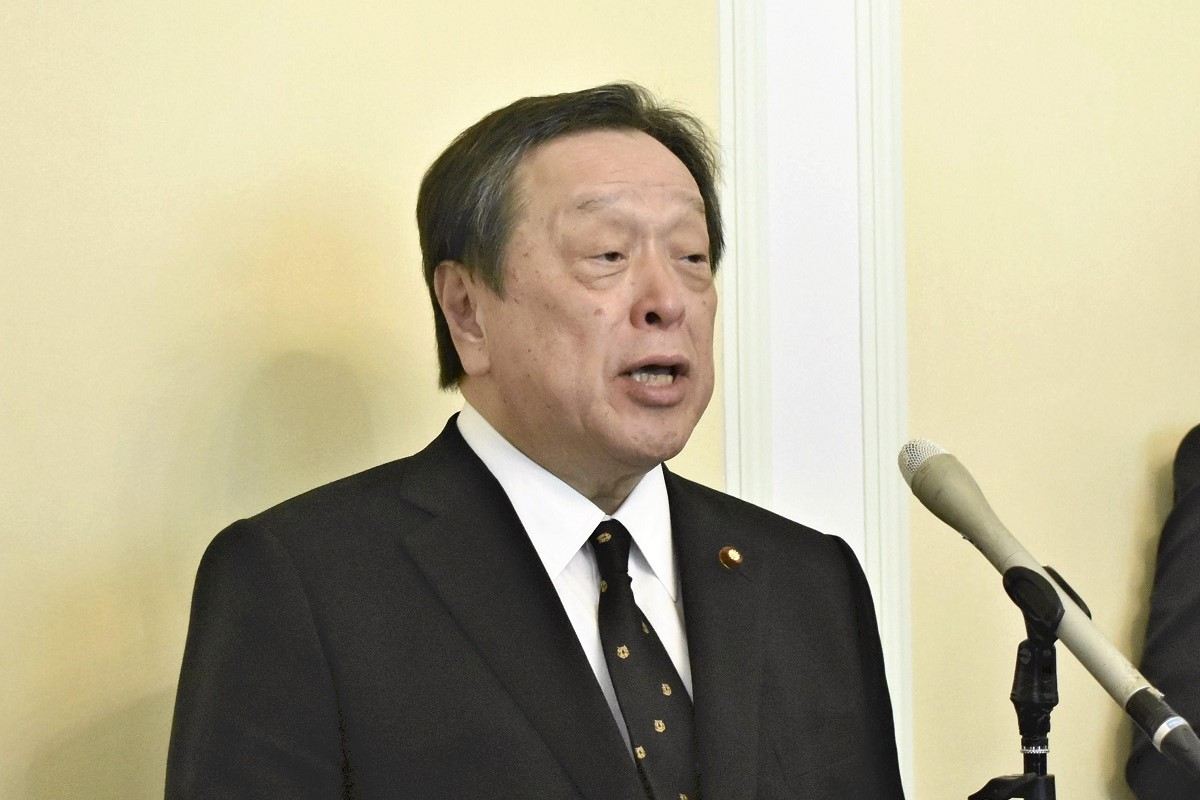
Defense Minister Yasukazu Hamada speaks to the press after a trilateral defense meeting between Japan, the United States and South Korea in Singapore on Saturday.
16:10 JST, June 4, 2023
SINGAPORE — Despite the failed launch of its first “military reconnaissance satellite” at the end of May, North Korea’s technological development capabilities should not be underestimated.
In April, Pyongyang conducted the first test launch of its new solid-fueled Hwasong-18 intercontinental ballistic missile. It is also expected to further accelerate its nuclear and missile development programs in response to Japan, the United States and South Korea deepening their cooperation.
Late last year, North Korean leader Kim Jong Un said Tokyo, Washington and Seoul had set their sights on North Korea and stressed the need for Pyongyang to strengthen its military power. The country’s military development is steadily progressing in line with a five-year national defense plan released in 2021.
Experts have been paying particular attention to the North’s use of cold-launch technology, in which a rocket engine is ignited after being expelled from a launch tube using high-pressure gas. In 2017, North Korea used the technology to test a Pukguksong-2 solid-fueled, intermediate-range ballistic missile modified from a submarine-launched ballistic missile to a ground-based version. Unlike the hot-launch method, cold launching avoids heat damage to the launch platform, making it possible to reload and fire further missiles.
Solid fuel is superior in terms of springing surprise attacks. Unlike liquid fuel, solid fuel does not need to be injected immediately prior to a launch. It took China and France decades to switch their respective ICBMs to solid-fuel versions. At the time of the Pukguksong-2 test launch, military experts believed it would take Pyongyang more than a decade to acquire solid-fuel technology. However, it only took six years for the North to achieve this goal.
“With the exception of the United States and the former Soviet Union, the pace of development in North Korea is incomparably faster than in other countries,” said Kwon Yong Soo, a former professor at Korea National Defense University in South Korea. “This should be taken seriously.”
According to experts on North Korea’s missiles, the nation has been improving its technology by adopting publicly available information and technology from China, Russia and other countries, rather than developing designs from scratch, thus opening the way to rapid progress.
"Politics" POPULAR ARTICLE
-

Japan to Support Central Asian Logistics Route That Bypasses Russia, Plan to Be Part of Upcoming Summit in Tokyo
-

Japan to Tighten Screening of Foreigners’ Residential Status by Providing Information of Nonpayment of Taxes
-

Takaichi Cabinet Approval Holds at 72% as Voters Back Aggressive Fiscal Stimulus, Child Benefits
-

Chinese, Russian Bombers Flew Unusual Path by Heading Toward Tokyo; Move Likely Meant to Intimidate Japan
-

Takaichi Meets Many World Leaders at G20 Debut in Johannesburg; Speaks with Heads of Countries Including Italy, U.K., Germany, India
JN ACCESS RANKING
-

Keidanren Chairman Yoshinobu Tsutsui Visits Kashiwazaki-Kariwa Nuclear Power Plant; Inspects New Emergency Safety System
-

Imports of Rare Earths from China Facing Delays, May Be Caused by Deterioration of Japan-China Relations
-

University of Tokyo Professor Discusses Japanese Economic Security in Interview Ahead of Forum
-

Japan Pulls out of Vietnam Nuclear Project, Complicating Hanoi’s Power Plans
-

Govt Aims to Expand NISA Program Lineup, Abolish Age Restriction
























